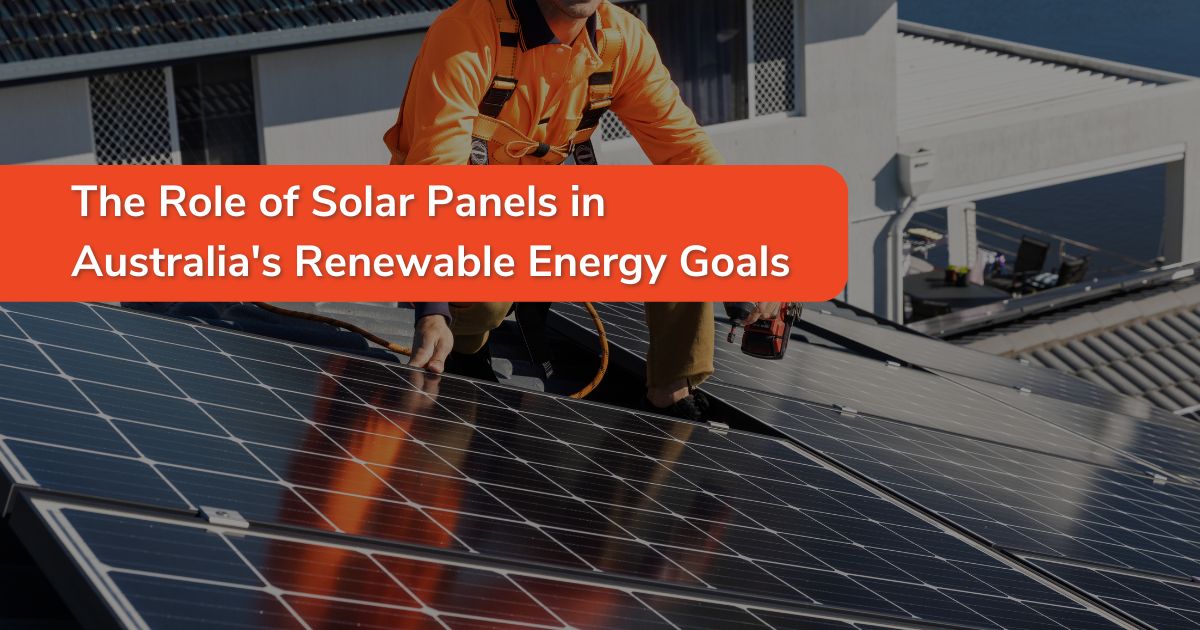The Role of Solar Panels in Australia's Renewable Energy Goals

Australia, known for its vast landscapes and abundance of sunshine, has a natural bounty well-suited for the renewable energy revolution. As the country grapples with the need to reduce greenhouse gas emissions and secure its energy future, solar power stands as a beacon of possibility, offering not only environmental benefits but also economic advantages. This comprehensive blog post will delve into the multifaceted role that solar panels play in Australia's quest for sustainable energy, from individual benefits to national initiatives, technological advancements, and overcoming challenges.
Harnessing the Sun: Solar Panels Benefits
The installation of solar panels provides a host of personal, social, and environmental perks, making it an attractive proposition for households and businesses alike.
Reduced Carbon Footprint
Australia, with its unique biodiversity, is particularly vulnerable to the consequences of climate change. Solar energy, as a clean and renewable source, has the potential to significantly reduce the carbon emissions that come from traditional fossil fuel-based electricity generation.
Cost Savings on Electricity Bills
Investing in solar power systems translates to immediate and long-term financial gains through reduced electricity bills. This shift towards self-generation of electricity means that individuals and companies are less susceptible to the volatile changes in energy market prices.
Energy Independence
As an island continent, Australia faces logistical challenges with energy distribution. Solar power, particularly when combined with energy storage solutions, promotes a degree of independence, allowing users to rely less on the grid and more on their own energy production.
Australia's Ambitious Renewable Energy Targets
The Australian government has set some of the most ambitious renewable energy targets in the world, acknowledging the vital role that solar power will play in achieving these goals.
Overview of Renewable Energy Objectives
With plans to achieve 33 terawatt hours of renewable electricity by 2020 and a long-term objective to reduce emissions by at least 26-28% by 2030, Australia is striving to make a substantial shift towards clean energy, and solar power is integral to this strategic vision.
Solar Power's Strategic Significance
Solar photovoltaic (PV) technology accounts for a significant portion of existing renewable energy infrastructure, and its role will only grow as innovations make it an increasingly competitive option for green electricity production.
Government Initiatives and Incentives: Encouraging Solar Adoption
In recognition of solar energy's potential, the Australian government has implemented various programs and financial incentives to encourage the uptake of solar panels across the nation.
Subsidies and Rebates
A range of subsidies and rebates are available, such as the Small-scale Renewable Energy Scheme (SRES), which provides financial incentives to individuals and small businesses who install eligible small-scale renewable energy systems.
Feed-In Tariffs
Feed-in tariffs ensure that the electricity generated from small-scale renewable energy systems, including solar panels, is financially rewarded when it is fed back into the grid, offering another avenue for users to benefit financially from their solar energy production.
Solar Panel Technology Advancements: Efficiency and Affordability
The realm of solar panel technology is evolving at a rapid pace, with advancements aimed at making solar power more efficient and cost-effective.
Enhanced Efficiency
Recent developments have improved the efficiency of solar panels, increasing their ability to convert sunlight into electricity. Higher efficiency panels mean more power is produced from the same amount of sunlight, making solar systems more productive, especially during low-light conditions.
Affordability and Accessibility
Decreases in the cost of solar panels, coupled with improvements in their longevity and performance, are making solar power more accessible to a broader range of consumers. Additionally, financing options and innovative business models like solar leases are reducing the barriers to entry for many households and businesses.
Addressing Challenges in Solar Panel Adoption
While the outlook for solar energy in Australia is bright, the road to full-scale adoption is not without its shadows. Several challenges must be addressed to ensure a smooth transition to a solar-powered future.
Overcoming High Initial Costs
The upfront investment for a solar power system can be a deterrent for some. However, options like solar loans, leasing programs, and third-party ownership models offer consumers alternative ways to afford solar installations.
Tackling Space Limitations
Not every property has an ideal roof for solar. Community solar projects and technology like solar double-sided panels are emerging as creative solutions to this space limitation, allowing a broader swath of the population to reap the benefits of solar energy.
Building a Skilled Workforce
The rapid growth in the solar industry necessitates a skilled labor force capable of installing, maintaining, and repairing solar power systems. Investments in education and training are crucial to ensure the industry's sustainable growth.
The Call to Action: Embracing Solar Power in Australia
As we stand at the crossroads of energy transformation, the collective action of individuals, businesses, and the government will determine how effectively Australia harnesses the potential of solar energy to meet its renewable energy goals. It is imperative that we take advantage of the abundant resource that the sun provides and forge a path towards a sustainable and resilient energy future.
By educating ourselves on the benefits of solar power, taking advantage of available incentives, keeping abreast of technological advancements, and advocating for supportive policies, we can contribute to a cleaner, greener Australia for future generations. Whether you are a homeowner considering a solar installation or a business leader exploring renewable energy options, the time to act is now. Solar power is not just a part of the solution; it is a shining cornerstone in the foundation of Australia's renewable energy future.
%20(1).png?width=265&height=96&name=www.smartenergyanswers.com.auhs-fshubfsSmart%20Energy%20Answers%20Logo%20(HIRES)%20(1).png)

.png?width=514&height=121&name=Tesla%20Powerwall%203%20(new).png)







